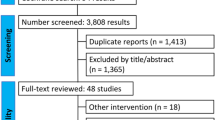Summary
The indications for operative treatment of lumbar disc herniations are outlined and the advantages, short-comings and temptations of discolysis, microoperation and large approach discussed.
The following indication scheme is proposed:
Discolysis: Non-displaced disc herniation without other major causative pathology
Micro-operation: Displaced disc herniation; nondisplaced disc herniation with monosegmental additional causative factors
Large approach: Multiple disc herniations with suspected displacement and multisegmental additional pathologies.
Similar content being viewed by others
References
For literature see the following review article and monograph
Loew, F., W. Caspar: Surgical approach to lumbar disc herniation. In: Krayenbühl, H., et al. “Advances and Technical Standards in Neurosurgery”, Vol. 5, pp. 153–174. Springer, Wien—New York 1978
McCulloch, J. A., I. McNab: Sciatica and Chymopapain. Williams and Wilkins, Baltimore—London 1983
Author information
Authors and Affiliations
Rights and permissions
About this article
Cite this article
Loew, F. Different operative possibilities for treatment of lumbar disc herniations — how to choose the best method for the individual patient. Neurosurg. Rev. 9, 109–111 (1986). https://doi.org/10.1007/BF01743060
Issue Date:
DOI: https://doi.org/10.1007/BF01743060




